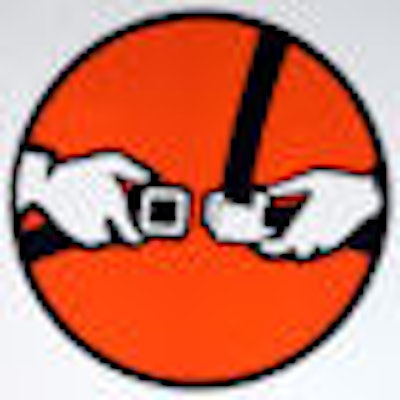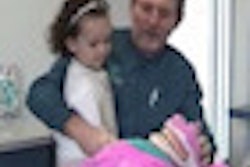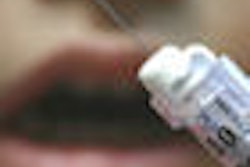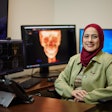
In more than 30 years of practice, Dennis McTigue, D.D.S., M.S., has seen a lot of changes -- and perhaps none more significant than attitudes about restraining kids.
"It used to be that parents wanted nothing to do with sedation or general anesthesia," he said. "Parents were not nearly as concerned about behavior management techniques. In the most recent studies, we found that parental attitude had flip-flopped."
Use of restraints in dentistry has become controversial. One highly publicized case led to a law enforcement investigation. (See part I of this two-part series.)
The change in attitude has made it easier for dentists to refer difficult patients to pediatric specialists trained in the special requirements of sedation and general anesthesia. But it has created new challenges when these techniques can't be used.
Many parents are now accustomed to coming into the operatory, where they don't want to see their child overpowered. Partly for this reason, the hand-over-mouth approach has gone out of fashion.
With this technique, once commonly taught in dental school, the dentist puts a hand over a screaming child's mouth. It wasn't meant to constrain breathing, only to quiet the child so the dentist could be heard, Dr. McTigue said. But after surveying dentists and dental school instructors, the American Academy of Pediatric Dentistry (AAPD) decided to drop it from behavior management guidelines.
On the other hand, sedation and general anesthesia techniques have become safer -- and are familiar from TV dramas -- so parents and guardians are less afraid of them, Dr. McTigue noted.
When to do it
In most cases, behavior management techniques such as tell-show-do, distraction, and voice control can prevent the need for physical restraints. But sometimes a child is just too upset to yield to these approaches.
"If you have a child that's really defiant -- they're kicking and screaming -- or they're really, really fearful or anxious, and you feel that you can't deliver high-quality care within the conventional dental setting, that's when we think of the other end of the continuum of interaction," said Issa Sasa, D.D.S., M.S., an associate professor of pediatric dentistry at the University of Texas at San Antonio.
That end of the continuum might begin with nitrous oxide, which general dentists can use safely even in children. "It's a very safe adjunct for working with kids who are nervous," Dr. McTigue said. "But for the child who is pitching a fit, it's not going to help."
In such instances, Dr. McTigue sometimes defers treatment. "It used to be that if a child had a cavity, it had to get treated right now," he said. Now the guidelines of the AAPD -- which Dr. McTigue helped write -- allow for delaying in some cases. "We say, 'Your child has a cavity, but she's 3 and it's going to be stressful for everybody to take care of it right now.' "
But not all cases can be delayed, even for a few days. One example is the patient who comes in with an emergency, such as a broken tooth, facial swelling, or abscess.
Sometimes even a toothache requires immediate attention, Dr. McTigue pointed out. "Mom is tired because the kid has been up all night. The kid was sent home from school. The kid has not eaten much and didn't sleep well and is scared."
If a general dentist has a good relationship with a specialist down the hall -- or even down the street -- a referral may provide the solution. But in some places, particularly rural areas, pediatric dentists are few and far between. Dentists with special training for mentally disabled patients may be even harder to find.
Even when a specialist is available, not all patients can afford one. Many specialists don't accept Medicaid. And many private insurers don't cover general anesthesia, which costs thousands of dollars. "My biggest dilemma is for kids who need general anesthesia but the insurance doesn't pay," Dr. McTigue said.
How to do it
So if all else fails, it may be time to use restraints. Pediatric dentists such as Dr. McTigue don't call it that, however. "The correct term is 'protective stabilization,' " he said. "It's to protect children from hurting themselves."
Some dentists ask an assistant to hold the patient steady or do it themselves. "I restrain children every time I have a needle in my hand with anesthetic in it," said AAPD President Beverly Largent, D.M.D. "I have their heads cuddled in my arms because with a needle in my hand I don't want any sudden movements. I also have a dental assistant holding their hands, but the child and I have had a conversation beforehand. I explain that the assistant will hold hands with them in case they forget."
Conversation with the parents or guardians is also essential, Dr. Sasa said. "You need to let the parents know this is what we're going to be doing. They need to be OK with that."
And Dr. Largent noted that the patient should not be restrained for too long. "If the child can be restrained for 10 minutes, I personally consider it appropriate care," she said. "If the child is very young and uncooperative, and the treatment time approaches more than 30 minutes, I become very uncomfortable with restraining the child for care."
Dr. Largent also sometimes uses "passive" stabilization (in which the patient is held by a device such as a papoose board or Pedi-Wrap) instead of "active" stabilization in which someone -- the dentist, assistant, or parent -- holds onto a foot or hand.
Dr. McTigue very much prefers the passive stabilization approach. If a patient is held by a person, he worries that a patient will work a foot loose and kick or strike out. This can lead the person holding the patient to squeeze harder, which may leave marks on the patient's skin.
A papoose board, on the other hand, won't leave blemishes and can be adjusted to the needs of the individual patient. Dr. McTigue also sometimes uses a mouth prop.
Dr. McTigue said he prefers the papoose board by Olympic Medical, which has a firm back and Velcro straps that can be taken off sequentially. If the child asks to be let out, you can undo one strap as an experiment, then follow with the others if the child behaves well.
This approach can make the child feel a sense of accomplishment, leading to better cooperation in the future, Dr. Largent noted.
The same approach often applies to adult mentally disabled patients; the papoose boards come in large sizes.
And once patients have been restrained in the right way, they usually cooperate the next time. "My experience is that a repeat use of the restraint is rarely, if ever, needed," Dr. Largent said.



















